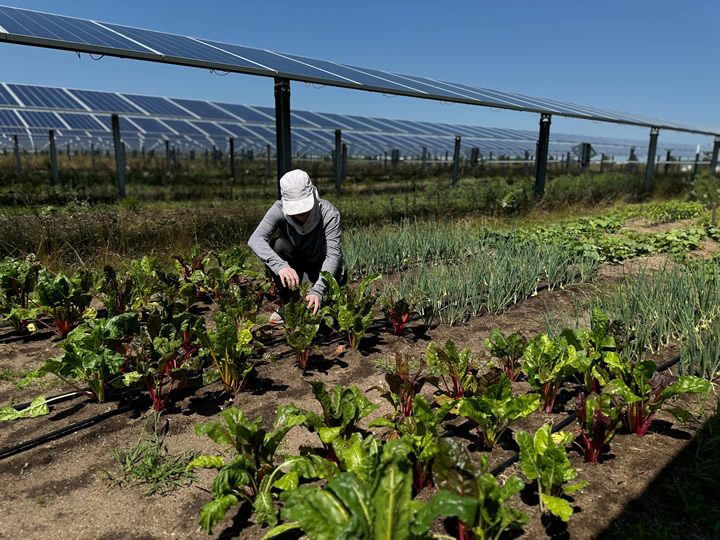Enhance Farm Resilience With Agricultural Microgrids

As extreme weather events bring an influx of floods, wildfires and droughts, frequent power outages hinder farm operations. Rural areas nationwide are most susceptible to outdated grid infrastructure and prolonged downtime as utility companies struggle to restore power.
Microgrids — localized energy systems — could be a viable solution. They work independently or congruently with the electricity grid, utilizing renewable energy sources, energy storage and smart control technologies to supply and consume power efficiently. The rise of microgrids could be the answer to agricultural resilience.
What Are Agricultural Microgrids?
Microgrids are small distributed energy resources that connect to the grid, leveraging traditional and renewable power sources within a localized system. Among the many benefits of microgrids is the ability to draw electricity from the grid or operate independently, increasing energy reliability, quality and security in the farming sector. This can help manage cost constraints associated with power outages.
Adopting microgrids and renewable power in agriculture is crucial for boosting food security, energy efficiency and sustainability. However, feasibility differs from nation to nation. In low- and middle-income countries, it is difficult to access modern energy infrastructure, while high-income countries are working toward lowering emissions with renewable technologies.
The agricultural industry is generally highly dependent on fossil fuels, especially for irrigation systems. By decreasing dependence on centralized systems, farms can use microgrids to generate their own power and reduce their carbon footprints.
Top 5 Ways Microgrids Boost Farm Resilience
Microgrids are the future of energy systems and can greatly improve commercial applications. Here are the top five ways microgrids can enhance agricultural productivity and resilience.
1.Reliable Power During Outages
Operational downtime from grid outages leads to financial losses and poses a risk to food security. Likewise, electrical transmission and distribution are often limited in remote areas like farms and First Nations communities, while populated cities may have robust energy infrastructure to meet demand. In both remote and populated areas, though, key locations — such as airports, educational institutions and health care facilities — rely on microgrids.
Microgrids serve as backup power during outages, employing renewable energy and battery storage to keep essential farm activities running, such as irrigation, refrigeration and animal care. Lithium-ion batteries are commonly used in microgrid technology and have a 10 to 15-year lifespan before they need replacement.
2.Lower Energy Costs and Predictable Bills
Independent energy generation accrues significant savings for farmers by reducing their reliance on conventional grid electricity. By deploying energy storage systems, they can reserve clean energy from solar, wind and other renewable sources and use it during peak periods.
Solar microgrids, in particular, can cut community energy costs by 60%, making them a desirable solution in rural regions.
3.Support for Sustainable Farming Practices
Sustainability is quickly becoming a cornerstone of agricultural practices, with farmers seeking ways to generate clean electricity and revamp best practices for a lower carbon footprint. Microgrids align with those initiatives, promoting clean alternative energy while meeting the food supply needs of a growing population.
4.Improved Water Management and Irrigation
Irrigation pumps and smart sensors rely on electricity. When the power goes out, microgrids can ensure this equipment fully functions to deliver water to crops.
Overall, microgrid energy distribution enables the adoption of data-driven irrigation technologies to maximize resource efficiency and decrease waste, resulting in better crop yields. Efficient irrigation management is especially crucial during droughts or water restrictions.
5.Enhanced Productivity and Crop Protection
Microgrids may be small, but they can lead to excellent productivity and crop protection. These systems enhance automated cold storage for harvest preservation and improve the growing conditions in greenhouses and barns. In turn, farms experience healthier crops and less spoilage, which is a risk of power disruptions.
Microgrids in Action on Farms
Several farms across the U.S. have implemented microgrids. Our Table Cooperative in Portland, Oregon, deploys a grid-connected microgrid to continue its cold storage operations during blackouts and protect harvests. The microgrid also allows people to charge their phones, run the air conditioner and heat food from the store.
In North Carolina, Butler Farms — a sustainability-focused hog farm — uses solar, biogas and battery storage components in its microgrid to boost electricity reliability during grid outages. Meanwhile, egg distributor Rose Acre Farms depends on its microgrid to support energy-efficient lighting, water and waste management initiatives.
Steps for Farmers Considering Microgrids
Farmers interested in adopting microgrids for their agricultural activities should assess their energy needs, including current electricity consumption, critical systems and potential future demands. Livestock farmers, especially, may have different energy applications than crop producers.
Several funding and technical assistance options may be available through one’s state or the U.S. Department of Agriculture’s Rural Energy for America Program. These initiatives help with initial costs and technology implementation. Likewise, local utility companies, cooperatives or agricultural extension services can provide essential expertise, guidance and support throughout the planning and installation processes.
Farmers must tailor microgrids to their farms’ individual requirements for maximum sustainability, resilience, and savings. Other considerations include determining what alternative energy sources are available and whether or not to connect the microgrid to the primary grid.
They must also choose an appropriate system design, including the proper components, layout and control systems to optimize generation. The installation itself requires careful site selection, planning, preparation, wiring, engineering and testing to meet performance requirements.
The Future of Resilient Agriculture
As more people realize the potential of microgrids for energy efficiency, dependability and sustainability, these technologies are likely to become more widespread in the agricultural sector. Producers can integrate these systems into their farms for a continuous power supply during electricity disruptions.
Comments (0)
This post does not have any comments. Be the first to leave a comment below.
Featured Product

